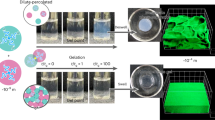Abstract
From a general point of view food can be seen as either a continuous aqueous or lipidic phase in which other components are dispersed (for example long fibres, droplets). While these systems seem to be very different one from the other, they generally show similar behaviour due to the presence of a supramolecular structure, comprised of ordered or interacting droplets, particles etc. that determine these characteristics. Many food systems can be treated as gels, characterised by a three-dimensional network where weak interactions (like Wan der Waals interactions or hydrogen bonding) ensure the stability of the structure. The gel is assumed to coincide with the critical gel of Winter's theory, but a finite relaxation time is assumed to account for the flowing character of foods, that is interpreted in terms of theory of cooperative flow. Thus, apart from the usual two continuum material function, i.e. a truncated relaxation spectrum and an apparent elastic modulus, other two material parameters were determined and proposed to describe the network extension and its strength. This kind of approach, named weak gel model, was applied to different foods such as jams, dough and yoghurt and it proved to be quite adherent to food reality.
Similar content being viewed by others
Author information
Authors and Affiliations
Additional information
Received: 6 February 2000 Accepted: 10 October 2000
Rights and permissions
About this article
Cite this article
Gabriele, D., de Cindio, B. & D'Antona, P. A weak gel model for foods. Rheol. Acta 40, 120–127 (2001). https://doi.org/10.1007/s003970000139
Issue Date:
DOI: https://doi.org/10.1007/s003970000139




